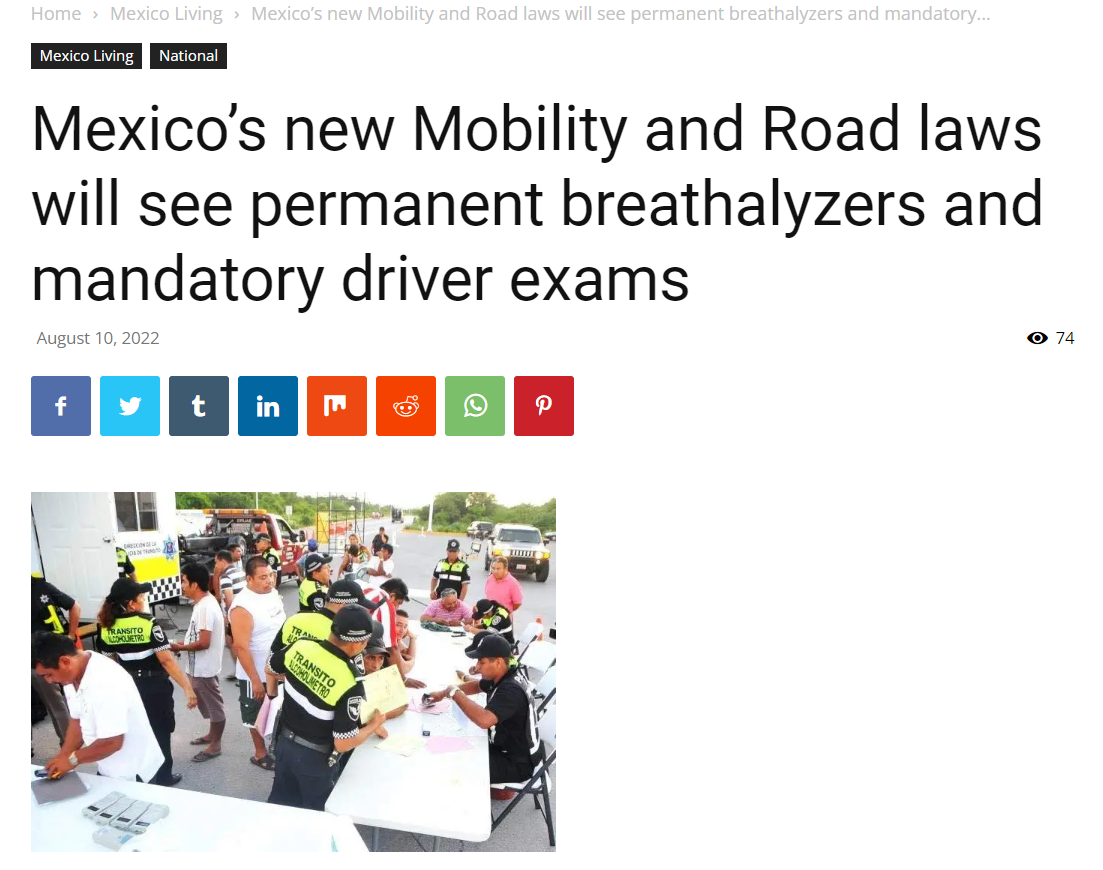Mexico’s new Mobility and Road laws will see permanent breathalyzers and mandatory driver exams
POST 1- NEWS
Breathalyzer operations on a permanent basis are part of the new Mobility and Road laws being put into effect across the country. In May, the new laws were published in the Official Gazette of the Federation (DOF) giving every state six months to begin implementing the new regulations.
Patricia Mercado, president of the mobility commission of the Senate of the Republic, explained that as of May 18, Mexico’s states have 180 days for the creation of the National Mobility System, which will be made up of the secretariats of Agrarian, Territorial and Urban Development, of Communications and Transportation, Economy and representatives of the states who will lay the foundations to issue the applicable guidelines in their states based on the new General Law of Mobility and Road Safety.
Across Sinaloa, mandatory driver’s exams, speed limit compliance, and the wearing of helmets for motorcyclists will also become law. The new General Law on Mobility and Road Safety also requires permanent breathalyzer operations that will test motorists, motorcyclists, and public transport drivers.
All states and their municipalities will be obliged to carry out breathalyzer operations that will prohibit people to drive with a blood alcohol level greater than 0.25 milligrams per liter of exhaled air or 0.05 blood alcohol limit.
For motorcycle drivers, they will not be able to drive if they exceed 0.02 blood alcohol, and only zero blood alcohol for public transport drivers. Motorcyclists and their passengers must wear a helmet that complies with the Official Mexican Standard.
Speed limits on all primary and secondary roads will be monitored. There will be approved speed limits of 80 km/h in central lanes of controlled-access avenues, 50 km/h on primary roads, and 30 km/h on secondary roads.
The new law will also make talking on a cell phone or any other electronic or communication device illegal. In addition, there would be penalties for those who carry children under 12 years of age in the front seat and without a seat belt.
Personal opinion
I believe that these road awareness measures are extremely important to have greater safety when driving, both for the driver and for pedestrians.
According to Inegi (2020), 301,678 accidents were reported, of which 245,297 registered only material damage (81.3%); 52,954 injured victims were identified (17.6%), and the 3,427 accidents remaining correspond to events with at least one deceased person (1.1%) at the accident site. Furthermore, the entities with the highest number of deaths at the accident site per 100,000 inhabitants during 2020 are: Sinaloa (8.8), Chihuahua (7.7), Querétaro (7.0), Sonora (6.5) and Zacatecas (5.9). Likewise, in this same period the national rate was 3 deaths per every 100,000 inhabitants.
All these figures are alarming, which is why these measures were indispensable and necessary and other states to the northwest should implement them too.
References:
INEGI (2020). PRESENTA INEGI LA GEORREFERENCIACIÓN DE ACCIDENTES DE TRÁNSITO EN ZONAS URBANAS. Recovered from: https://themazatlanpost.com/2022/08/10/mexicos-new-mobility-and-road-laws-will-see-permanent-breathalyzers-and-mandatory-driver-exams/ [August 11, 2022].



Comentarios
Publicar un comentario